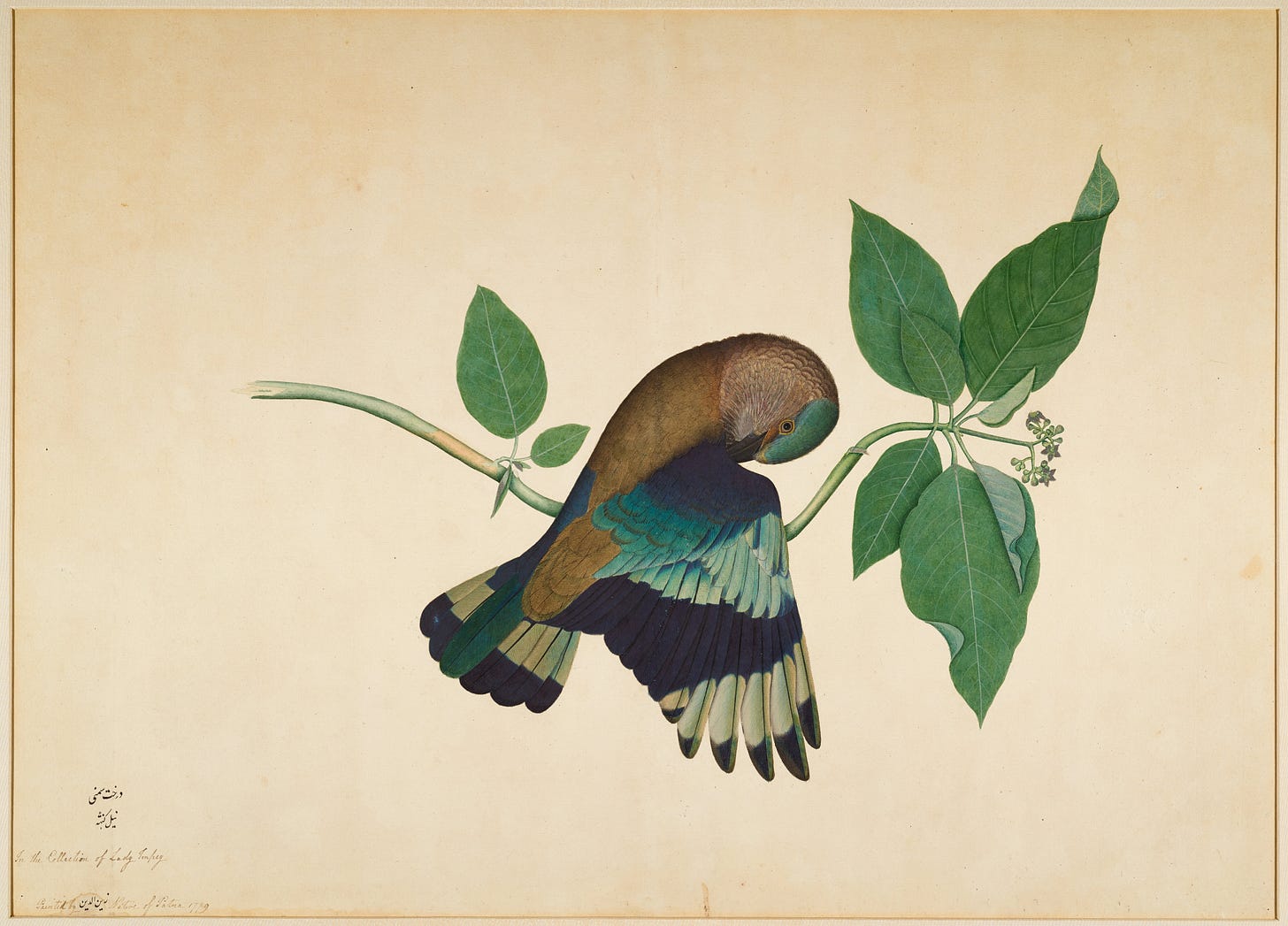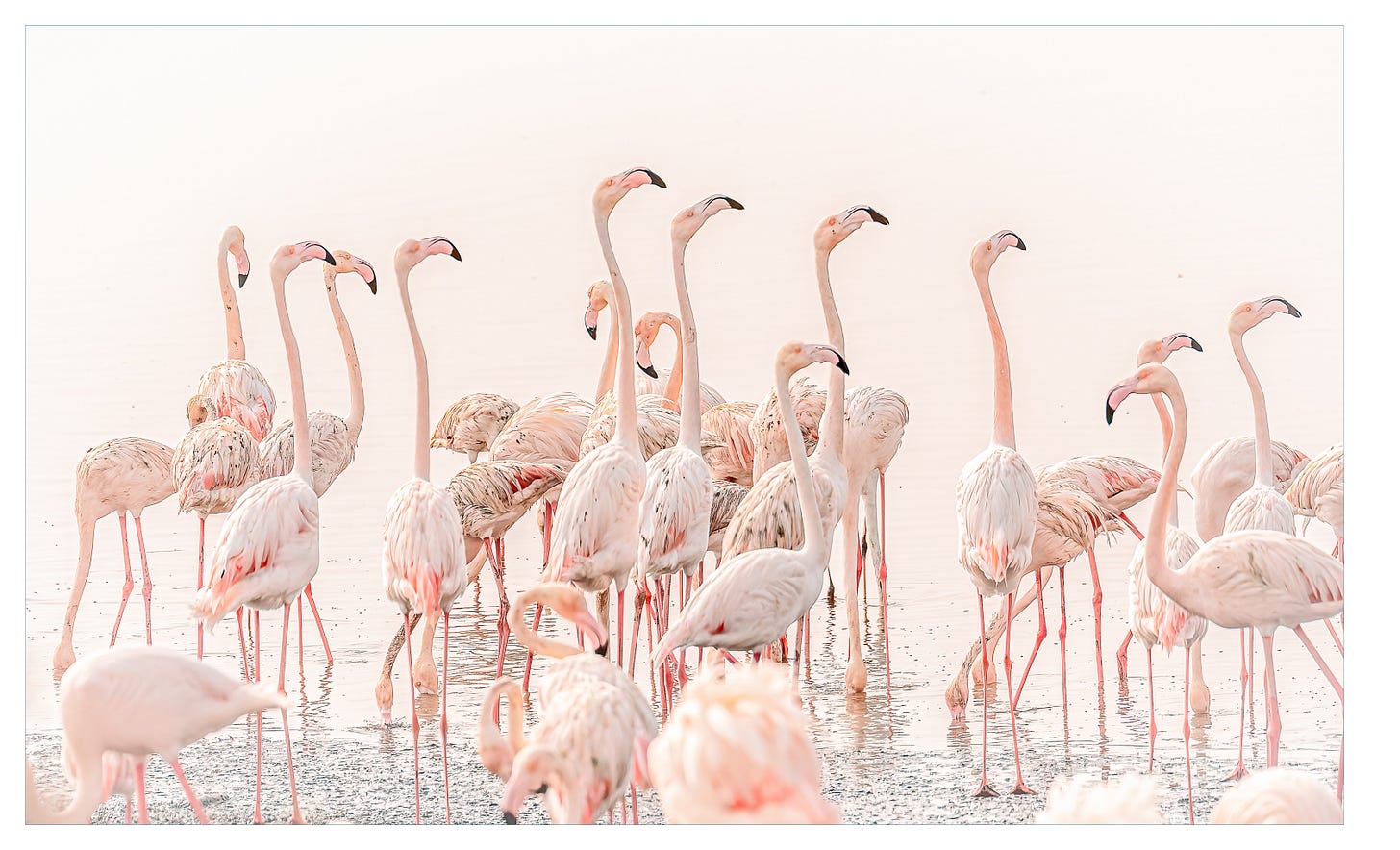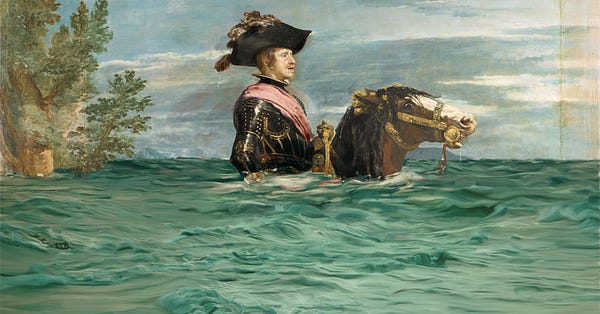#10 Sustainability & digital practice in GLAMs
How do cultural heritage institutions act with regard to climate change?

Dear reader,
In our last issue, we settled on climate change for the next issue of Dig It! and thought of sending it out on Earth Day (22 April). Then a new COVID variant hit India - and stopped our work on that issue. It was one of all these moments this last year when things simply turned out differently than we expected.
However, climate change is always an issue worthy of our attention, on Earth Day or during the rest of the year. And that’s why we’re dedicating this issue of Dig It! to the projects and work done in cultural heritage institutions about global warming and the human impact on the environment. As always, we try to highlight initiatives from all across the globe, from institutions both big and small. Don’t hesitate to add your work in the comments!
In this issue, we discuss the role digital practice in cultural heritage institutions can take in steps towards a greener planet: How do institutions need to reimagine themselves to create impact? How can GLAMs act to spread awareness of climate change, using their collections and collaborating with online communities?
1. Let’s talk about… GLAMs and climate change
Larissa: When you, Medhavi, proposed climate change as a topic for the next Dig It! newsletter, I was hesitant at first, to be honest. It seems like a huge topic, incredibly important, but I was only aware of so few GLAM initiatives that took it as seriously as we all should. And I was quite thrilled to see the different perspectives in digital GLAM practice that we then discovered in our research.
One thing that climate change as a topic in GLAM institutions always makes me reflect upon is all the different layers of change we need to see in these organizations - and all of them are important. The need to change, to adapt to their shifting environment in intersecting developments in society, from climate change and digital transformation to equity in our society, is something that will be crucial for cultural heritage institutions in the years to come. It might be the only way to become resilient organizations that are relevant to their society and communities.
Apart from developing as organizations, cultural heritage institutions need to raise awareness about human-made climate change if we are serious about being knowledge and research institutions. Seeing institutions like the National History Museum in London publishing their carbon footprint reports or the Dutch Rijksmuseum working successfully on the sustainable management of their buildings are some of the steps I’d like more institutions to take.
Medhavi: I couldn’t agree with you more! Just as museums declare visitor footfalls with pride, imagine if we started to hear about museums with the least carbon footprint! Given the delicate condition of many heritage objects, their requirement for temperature control, this will be a long (and challenging) journey, filled with small steps and big ones - for starters, perhaps a framework for evaluating the current carbon efficiencies?
Every year, I see an increasing number of museums step up their efforts to engage their communities through participatory programs, exhibitions, and social media on the occasion of Earth Day, Biodiversity Day, Environment Day; more recently though, I came across the ROM initiative to hire a Curator of Climate Change. I am sure you’d agree that it is an inspiring step, given the interdisciplinary nature of the role and its potential for impact.
Larissa: Absolutely. Speaking about the steps that institutions should take, I think this kind of outreach and awareness-raising that you mentioned might be critical in the years and decades to come. GLAMs could play a vital role as knowledge and research institutions to help understand how our climate and ecosystems work, to help their audiences to understand why we all have to change our behavior. And although digital systems, from internet usage to data storage, of course also have a carbon footprint, they could as well play a role in increasing the understanding of the environmental impact of our everyday behaviors. One example: The Nordic Museum in Stockholm currently has an exhibition on the Arctic, linking together Arctic cultures with climate change. At the end of the exhibition, there’s a digital interactive where you are invited to make a pledge about one area in your life where you want to change something. They explain to you how that would make a difference and show you what other people promised. There’s a web-based version as well. This kind of activity, making us aware of the environmental consequences of our lives and choices, is really inspiring to me.
Medhavi: May I add a spoiler here? If you click the link above to make a pledge at the Nordic Museum’s website, they will show you a comparable digitized object from their collection. Isn’t that just lovely?
Given the stakes, we all have a responsibility to do what we can. So how can GLAMs contribute or use their influence to drive discussions around climate action?
What do you think? We’d love to hear from you! How is your institution working on this topic?
2. Trending Now: Citizen Science and climate change
One major strand of activities that could help GLAMs in raising awareness for climate change is citizen Science. We already featured some initiatives on digital volunteering in an earlier issue, but within this topic, there is an interestingly wide range of projects working with volunteer communities online.
Larissa: One project that especially fascinated me is “Fossil Atmospheres” of the Smithsonian Institution, the National Museum of Natural History, and the Smithsonian Environmental Research Center. Volunteers help the project on Zooniverse to identify different types of cells in ginkgo leaves to contribute to understanding the impact of CO2 on global warming in different periods in time - including millions of years ago.
“It is important for us to understand what effect climate change might have on life on our planet in the long term. […] Having citizen scientists count stomatal index means that we can collect far more data than we would be able to do otherwise, as well as having many people count each image to make sure the counts are as reliable as possible. [...] By improving our ability to quantify the effects of CO2 on climate, you will be contributing to the basic science underlying projections of future environmental change.”
Fossil Atmospheres
This is a powerful initiative to link people to science - and in a time where too many are estranged from the concept of science, this seems to be a vital aspect of GLAM’s work.
Medhavi: That’s so true! Usually, science journals, academic publications, and similar formats aren’t usually accessible to the general public. The Bombay Natural History Society (BNHS) in India has an app called the “Internet of Birds” that helps amateur birdwatchers identify at least 600 species of birds found in the subcontinent. While everyone can contribute pictures of the birds they spot, further information is provided via Wikipedia pages! Involving people and enabling them with a participatory platform interests them and also helps them build a relationship with GLAMs over time.
Larissa: You’re totally right. Another project that I immediately fell in love with, is the Natural History Museums in Los Angeles County. They are working actively with iNaturalist in their Community Science work (a good term that they reflect on here). It’s a great example in my mind of working with a platform that already has a community and users and hence bringing the museum to new audiences and places while engaging with existing ones. Some of their projects are for example about detecting and identifying biodiversity in urban areas, SLIME, for example, is asking people to contribute their observations of snails and slugs (and God, what a great project name).
Speaking of places: Another way to engage people with their natural environment and how it changes, are photographic contests like Wiki Loves Earth, an annual event of the Wikimedia community. The idea is to make people discover and document nature reserves and other protected natural sites in their surroundings. I would love to see more GLAMs promote this and use it as a possibility to encourage a conversation with their audience on this topic.

3. Favourite Discoveries
We couldn’t settle for only one favourite discovery for this issue, but the three projects we chose all reflect upon the same question: What will our future look like if we act against climate change - or if we don’t?
Wrapped in plastics
Continuing on the point about encouraging conversations with the audience, here’s a brilliant campaign by Greenpeace Chile that prompts people to modify their consumption patterns. Borrowing the now-familiar phrase “Stop the Spread”, it tries to reinforce the same urgency placing adequate focus on individual responsibility.
What would the earth look like, if it was wrapped in plastic? The “Nature of Plastic” campaign re-envisions five of Chile’s most popular locations covered in plastic - through the creation of satellite photograph-style images.
Looking back at a carbon-based past
Climaginaries is a research project by several European universities initiated in 2018. One of their outputs around climate imaginaries is the exhibition “Carbon Ruins” which is accessible online and has an audio guide ready to download. The exhibition takes you to Sweden in 2053 when the country opens a new museum, FOSSIL, to celebrate reaching the global net-zero emissions of carbon dioxide. They present objects that stem from a past (our present) that is totally dependent on fossil fuels.
… and what if we don’t act?
Museum del Prado and the World Wildlife Fund collaborated on a project where they impressively showed what our world will look like if we miss the 1,5°C goal defined in the Paris Agreement. Sea levels rising, species becoming extinct and extreme droughts would impact lives across the world. The images show quite impressively how cultural heritage and art can be used to imagine different futures and outcomes of our actions.
4. Upcoming
🗓 1 June: GLAM-Wiki Office Hours
The Wikimedia Foundation regularly hosts Office Hours to answer questions and discuss all things GLAM with everyone interested. They are now starting the conversation about a potential GLAM-Wiki conference, so it’s a good point to tune in!
🗓 15 June: Digital Storytelling Festival
Stories connect people: Europeana and The Heritage Lab collaborate on a Digital Storytelling Festival to celebrate the use of open access collections to share stories in a format of your choice. Contribute until the 15 June!
🗓 16-17 June: Europeana Aggregators’ Fair
Are you considering contributing to Europeana with your collection and are still wondering about the right way to do so? Join their Aggregators’ Fair and find out!
🗓 22-24 June: IIIF Annual Conference
🗓 28 - 30 June: MuseumNext Digital Income Summit
Wondering about how to generate income with your digital activities? There is an amazing line-up at this conference promising some really interesting discussions.
Thank you so much for your attention, and please join in the conversation with #GLAMsDigIt on social media - or consider sharing this issue with your network.
All the best,






